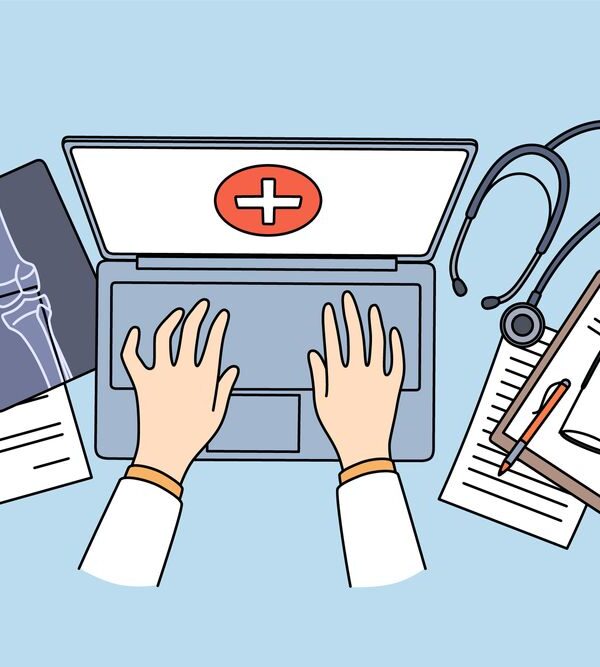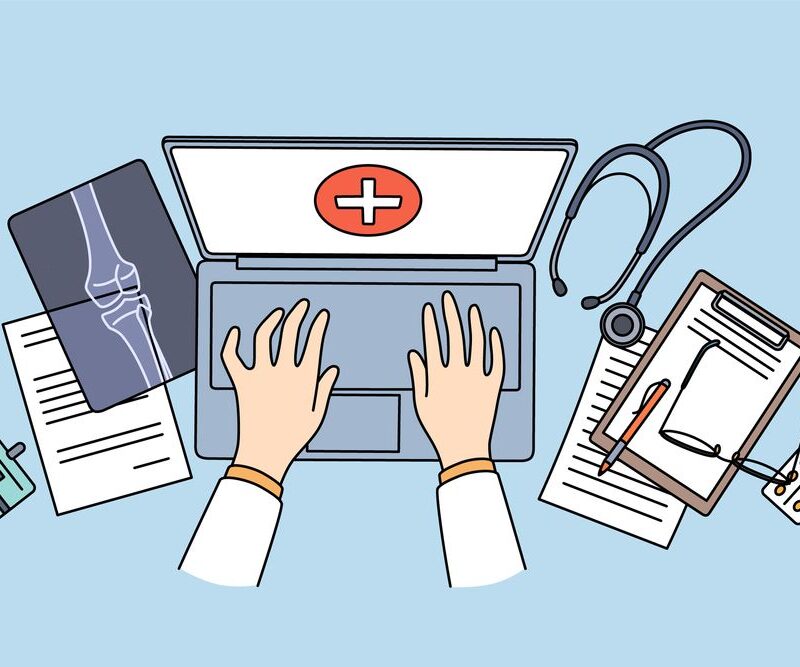How to Build Long-Term Patient Relationships with Automated Email Campaigns

Building long-term relationships with patients is essential for enhancing their overall experience and fostering loyalty. In an increasingly digital landscape, automated email campaigns present a valuable tool for healthcare providers to sustain meaningful communication. This article examines the significance of these relationships, the functionality of automated email campaigns, and the various benefits they offer. From personalization to efficiency, we will delineate the key elements for success, provide actionable steps for implementation, and offer strategies for ongoing engagement. Explore the insights presented to discover how you can strengthen patient connections through effective email strategies.
Key Takeaways:
- Personalized and relevant content in automated email campaigns help build stronger patient relationships and increase engagement.
- Using targeted audience segmentation and a reliable email marketing platform can save time and costs in maintaining long-term patient relationships.
- Measuring the success of automated email campaigns through open/click-through rates, conversions, and patient feedback can aid in continuous improvement and maintenance of relationships.
Why Are Long-Term Patient Relationships Important?
Long-term patient relationships are essential for healthcare providers, as they cultivate patient loyalty and trust, resulting in enhanced patient engagement and satisfaction.
The establishment of these relationships not only improves the patient experience but also contributes to a more stable practice by promoting referrals and facilitating consistent feedback, which are critical for the advancement of healthcare marketing strategies.
In the current competitive healthcare environment, platforms such as Doctible and Adit utilize email marketing to nurture these relationships through personalized communication, thereby ensuring that patients feel valued and informed about new services and preventive care options.
What Is an Automated Email Campaign?
An automated email campaign represents a strategic marketing approach that enables healthcare providers to send targeted communications to patients with minimal manual effort. This method streamlines communication and enhances patient engagement. By employing automated communication tools, healthcare practices can efficiently manage appointment reminders, educational series, and seasonal promotions tailored to meet patient needs.
These campaigns typically adhere to a structured framework that encompasses segmentation, personalization, and performance tracking, ensuring that messages resonate with the intended audience. Platforms such as Salesforce and HubSpot equip healthcare providers with the essential features to create these campaigns and analyze their effectiveness.
A critical aspect of these initiatives is the maintenance of HIPAA compliance, particularly when disseminating educational content or collecting patient feedback through automated surveys. These structured campaigns effectively remind patients of upcoming appointments, solicit their input on services, and provide vital health information, thereby fostering a more engaged and informed patient population.
How Does an Automated Email Campaign Work?
An automated email campaign functions through a strategic combination of predefined triggers, patient segments, and customized content, aimed at enhancing the effectiveness of email marketing initiatives among healthcare providers. By utilizing automated communication systems, healthcare practices can efficiently deliver personalized messages and reminders that are informed by specific patient behaviors or interactions.
This process commences with the establishment of triggers, such as appointment reminders or follow-up messages post-visit. Audience segmentation based on demographics, health conditions, or treatment histories enables more targeted outreach efforts.
Personalization strategies may include the incorporation of patient-specific information, such as names or details of recent treatments, thereby ensuring that each communication is both tailored and relevant.
For instance, employing surveys can yield valuable lead information that allows practices to assess patient satisfaction and adapt their services accordingly. Additionally, featuring patient reviews in newsletters can help foster trust, while optimizing email lists guarantees that the appropriate messages reach the intended audiences.
This approach ultimately enhances engagement and improves retention rates.
What Are the Benefits of Using Automated Email Campaigns for Patient Relationships?
The implementation of automated email campaigns presents several advantages for healthcare providers, including improved patient engagement, cost efficiency, and enhanced patient loyalty.
These campaigns facilitate ongoing communication with patients through personalized content, appointment reminders, and educational series.
Such strategies can substantially enhance referral programs and contribute to overall patient satisfaction.
1. Personalization and Customization
Personalization and customization in automated email campaigns are critical for enhancing patient engagement by delivering tailored content that aligns with individual patient needs and preferences. Healthcare providers can leverage patient data to establish targeted email lists, ensuring that recipients receive pertinent information that enhances the effectiveness of their marketing strategies.
For example, a healthcare provider may segment their audience based on factors such as age, gender, or medical history, allowing them to send timely reminders for preventive screenings or wellness check-ups that are specifically tailored to distinct demographics.
Incorporating patient interests such as topics related to nutrition, fitness programs, or chronic disease management into email communications can further capture attention and cultivate a sense of understanding and care.
The positive outcomes of personalizing communication are reflected in increased open and click-through rates, as well as improved overall satisfaction. These enhancements can significantly strengthen the patient-provider relationship and encourage healthier lifestyle choices.
2. Time and Cost Efficiency
Automated email campaigns offer significant time and cost efficiencies for healthcare providers by automating repetitive tasks and streamlining communication processes. This enables healthcare practices to concentrate on delivering high-quality patient care while ensuring that essential messages, such as appointment reminders and feedback requests, are consistently communicated.
Moreover, automated communication can effectively manage promotional outreach, such as informing patients about new services or seasonal discounts, without necessitating manual intervention. For example, practices can establish email sequences that are triggered upon the launch of a new service, ensuring that patients receive timely information that enhances their healthcare experience.
With the capacity to reach a larger audience with minimal effort, healthcare providers can achieve a considerable return on investment. By alleviating administrative burdens and enhancing patient engagement, automation not only conserves resources but can also lead to increased patient satisfaction and loyalty, ultimately driving revenue growth.
3. Increased Patient Engagement
Increased patient engagement represents a significant advantage of utilizing automated email campaigns, as these campaigns provide valuable healthcare tips and educational content that keep patients informed and actively involved in their health journeys. This proactive strategy not only enhances patient loyalty but also fosters a culture of preventive care among healthcare providers.
By delivering curated content directly to patients’ inboxes, healthcare organizations can ensure that individuals receive timely reminders regarding screenings, preventive measures, and lifestyle advice tailored to their specific needs.
For example, a series of emails focused on managing chronic conditions can include actionable insights, links to helpful resources, and patient testimonials, thereby fostering a sense of community among patients.
Additionally, integrating interactive content, such as surveys or quizzes, can further enhance engagement, encouraging patients to take a more active role in their healthcare.
Ultimately, these initiatives contribute to the development of stronger patient-provider relationships, as patients feel supported and well-informed throughout their health journeys.
What Are the Key Elements of a Successful Automated Email Campaign for Patient Relationships?
A successful automated email campaign aimed at enhancing patient relationships comprises several essential elements, including:
- targeted audience segmentation
- compelling subject lines
- relevant and valuable content
- clear calls-to-action
These components function cohesively to enable healthcare providers to effectively engage their patients and achieve the desired outcomes through their email marketing initiatives.
1. Targeted Audience Segmentation
Targeted audience segmentation is essential in automated email campaigns, as it allows healthcare providers to customize their messages for specific patient groups, thereby enhancing overall patient engagement. By analyzing patient data, providers can create segments based on demographics, interests, and healthcare needs, ensuring that communications are relevant to each distinct audience.
This process not only personalizes interactions but also cultivates a more meaningful connection between providers and patients. For example, delivering educational content specifically focused on diabetes management to patients diagnosed with the condition can enhance their understanding and engagement with treatment plans.
Additionally, appointment reminders tailored to patients’ preferences or previous behaviors can significantly improve attendance rates. This level of targeted communication fosters immediate engagement and nurtures long-term patient loyalty, demonstrating the provider’s commitment to individualized care and support.
2. Clear and Compelling Subject Lines
Clear and compelling subject lines are crucial for capturing the attention of patients in automated email campaigns, as they directly impact open rates and engagement levels. Healthcare providers should prioritize the development of subject lines that are concise, informative, and relevant to the content, thereby encouraging patients to engage with the email.
To achieve this objective, providers can integrate timely healthcare tips, seasonal promotions, or reminders about upcoming appointments within the subject lines. Additionally, employing elements of urgency or personalization, such as referencing a patients prior treatments or check-up schedules, can significantly enhance their effectiveness.
Conducting A/B testing of various subject line variations will provide invaluable insights into what resonates most effectively with the target audience. Ultimately, a well-crafted subject line serves as an essential gateway, inviting recipients to explore the valuable information contained within the email and fostering a stronger connection between patients and healthcare providers.
3. Relevant and Valuable Content
Providing relevant and valuable content in automated email campaigns is essential for maintaining patient interest and engagement over time. Healthcare providers should prioritize the delivery of educational series, healthcare tips, and requests for patient feedback that align with the needs and interests of their patients.
By customizing content to address specific health concerns or common misconceptions, the relationship between patients and providers can be significantly strengthened. For instance, including educational resources such as articles on managing chronic conditions or promoting personal wellness can enable patients with crucial knowledge.
Incorporating frequently asked questions can help clarify common inquiries and alleviate patient anxieties, while articles that dispel myths can address misinformation concerning treatments and procedures.
By diversifying the types of content shared, healthcare organizations can cultivate a trusting environment that promotes ongoing engagement and enhances the overall patient experience.
4. Call-to-Action
A clear and effective call-to-action (CTA) is essential in automated email campaigns, as it guides patients toward the desired next steps and encourages engagement. Healthcare providers should incorporate CTAs that prompt patients to participate in feedback requests, schedule appointments, or explore new services.
By utilizing persuasive language and positioning CTAs prominently within the email, healthcare practitioners can significantly enhance patient interaction. For instance, a well-crafted button such as “Book Your Next Appointment Today” not only stands out but also facilitates the scheduling process directly from the email.
Additionally, CTAs that invite patients to “Share Your Experience with Us” can foster a sense of community and contribute to service improvement through valuable feedback.
These actionable prompts not only drive immediate responses but also cultivate long-term relationships, ultimately leading to higher patient satisfaction and increased referrals. Engaging patients in this manner effectively transforms one-time visitors into loyal advocates for the practice.
How to Set Up an Automated Email Campaign for Patient Relationships?
Establishing an automated email campaign for patient relationship management entails several essential steps that healthcare providers must adhere to in order to optimize their email marketing initiatives.
By clearly defining goals and objectives, selecting a reputable email marketing platform, and ensuring adherence to HIPAA regulations, healthcare practices can develop effective campaigns that enhance patient engagement and satisfaction.
1. Define Your Goals and Objectives
Defining clear goals and objectives is the foundational step in developing a successful automated email campaign for healthcare providers, as it shapes the overarching strategy and anticipated outcomes. By establishing specific targets such as enhancing patient engagement or increasing feedback responses healthcare practices can create tailored content and strategies aimed at achieving these goals.
For example, a healthcare provider may focus on educating patients about preventive care, which can lead to improved health outcomes and a more informed patient population. Additionally, setting a goal to increase appointment bookings through automated reminders can enhance operational efficiency and reduce the incidence of missed appointments.
These objectives not only guide the creation of pertinent content but also influence how healthcare marketers segment their audience, ensuring that the appropriate messages reach the relevant individuals. This alignment between established goals and targeted audience engagement ultimately enhances the overall effectiveness of automated emails, fostering stronger patient relationships and optimizing practice operations.
2. Choose a Reliable Email Marketing Platform
Selecting a reliable email marketing platform is crucial for healthcare providers seeking to implement automated email campaigns. This decision is fundamental for the efficient management of patient communication and data. Providers should carefully evaluate various platforms based on their features, usability, and adherence to HIPAA regulations to determine the most suitable option for their specific requirements.
Plus the automation capabilities that facilitate timely and personalized outreach, segmentation tools play a vital role in targeting specific patient groups based on their health needs and demographics.
An effective platform should also include comprehensive analytics features that allow providers to monitor engagement metrics, assess campaign performance, and refine strategies over time.
Given the sensitive nature of healthcare data, it is essential to ensure that the chosen email marketing solution complies with HIPAA regulations. This compliance not only safeguards patient information but also fosters trust, which is critical in the healthcare sector.
3. Create a List of Targeted Patients
Creating a list of targeted patients is essential for the effectiveness of automated email campaigns, as it enables healthcare providers to customize their communications based on patient demographics, preferences, and needs. By effectively segmenting email lists, practices can improve patient engagement and ensure that the content remains relevant to each recipient.
To establish and maintain these email lists, healthcare providers should prioritize the collection of comprehensive patient information during the registration process and routine visits. The implementation of consent-based forms not only promotes transparency but also cultivates trust among patients.
Adhering to privacy regulations, such as HIPAA, is of utmost importance; therefore, utilizing secure data collection methods is critical to ensuring the protection of patient information.
Additionally, regularly reviewing and updating patient segments can assist in aligning messaging with the evolving needs and interests of the patient population, thus creating a more personalized experience that resonates with each individual.
4. Develop Engaging and Relevant Email Content
Developing engaging and relevant email content is essential for capturing the interest of patients and fostering ongoing interaction with healthcare providers. The content should prioritize the delivery of healthcare tips, educational resources, and personalized messages that align with patient needs and preferences.
For example, implementing a monthly newsletter that highlights recent health articles or shares success stories from fellow patients can cultivate a sense of community and support. Additionally, disseminating practical health tips that are tailored to seasonal changes, such as flu prevention strategies in the fall, can keep patients informed and proactive regarding their health.
Service announcements, including information about new treatments or clinics, should be presented in a manner that resonates with patient interests, ensuring that the information is perceived as relevant and timely.
By employing these various content types, healthcare providers can create a more engaging and informative email experience that encourages patients to remain connected.
5. Schedule and Automate Your Emails
Scheduling and automating emails are essential components in the execution of a successful automated email campaign, as they ensure the timely delivery of important messages to patients. By leveraging the features offered by email marketing platforms, healthcare providers can establish specific times and frequencies for their communications, thereby optimizing patient engagement.
Selecting the appropriate moments to disseminate these communications not only increases the likelihood of them being read but also cultivates a stronger connection with the audience. Establishing a routine that aligns with patients’ habits such as sending reminders or newsletters in the early evening or during lunch breaks can significantly enhance open rates.
Furthermore, automating follow-up messages tailored to patient interactions allows healthcare professionals to nurture relationships without causing overwhelm. This targeted approach not only improves patient engagement but also streamlines marketing efforts, enabling healthcare providers to concentrate on delivering quality care while maintaining effective communication.
How to Measure the Success of Your Automated Email Campaign?
Measuring the success of automated email campaigns is crucial for healthcare providers to assess their effectiveness and make informed, data-driven decisions regarding future marketing strategies.
Key performance indicators (KPIs) such as open rates, click-through rates, conversion rates, and patient feedback offer valuable insights into patient engagement and the overall performance of the campaigns.
1. Open and Click-Through Rates
Open and click-through rates are essential metrics for evaluating the efficacy of automated email campaigns, as they indicate the extent to which the content resonates with patients. A high open rate signifies that subject lines and timing are effectively capturing attention, while click-through rates provide insight into the level of engagement with the email content itself.
These metrics serve not only as performance indicators but also as valuable resources for optimizing future campaigns. By analyzing these rates, organizations can gain a deeper understanding of their audience’s preferences and adjust their messaging accordingly.
To enhance these metrics, implementing strategies such as:
- A/B testing different subject lines
- Personalizing content based on patient history
can be highly beneficial. Segmenting the email list ensures that communications remain relevant to each group, thereby increasing the likelihood of higher open and click rates.
The insights derived from these analytics can inform future content creation, ensuring that it aligns more closely with the genuine interests and needs of recipients.
2. Conversion Rates
Conversion rates are a critical metric for healthcare providers to assess the effectiveness of automated email campaigns, as they reflect the percentage of patients who undertake desired actions, such as booking appointments or providing feedback. A comprehensive understanding of conversion rates enables practices to refine their email marketing strategies and enhance patient engagement.
To calculate the conversion rate, one must divide the number of conversions by the total number of emails sent, providing practitioners with valuable insights into audience behavior. For example, if a clinic sends out 1,000 emails and 100 patients book appointments, the conversion rate would be 10%. Actions such as scheduling visits, signing up for newsletters, or clicking through to health resources are all categorized as conversions.
To enhance these rates, the implementation of targeted content strategies such as personalized greetings, segmented email lists based on patient demographics, and timely follow-ups can foster more meaningful interactions and increase overall engagement.
3. Unsubscribe Rates
Unsubscribe rates represent a critical metric in automated email campaigns, reflecting the percentage of recipients who choose to discontinue future communications. Elevated unsubscribe rates may indicate potential concerns related to content relevance, communication frequency, or overall engagement, prompting healthcare providers to reevaluate their email marketing strategies.
It is essential to comprehend the underlying reasons contributing to these increased rates in order to refine email outreach efforts effectively. Recipients may feel inundated by the volume of messages or perceive the information as irrelevant or misaligned with their interests and needs.
To address this issue, healthcare providers should analyze engagement metrics, including open and click-through rates, and solicit feedback through surveys to identify specific concerns. Strategies for enhancing content may include:
- Segmenting the audience for improved targeting
- Personalizing communications
- Clearly articulating the value of the information provided
By consistently optimizing email campaigns based on recipient feedback and behavioral data, providers can cultivate stronger patient relationships and diminish the likelihood of unsubscribes.
4. Patient Feedback and Engagement
Patient feedback and engagement metrics are critical for assessing the effectiveness of automated email campaigns, as they offer valuable insights into the resonance of content with patients.
By integrating surveys and feedback requests within email communications, healthcare providers can obtain essential information to refine their marketing strategies.
To effectively gather this feedback, utilizing tools such as online surveys and rating systems can greatly streamline the process. Automated email campaigns may include personalized links directing patients to complete concise questionnaires or brief polls designed to capture their experiences.
By analyzing the data collected, providers can identify specific areas of interest and concern, enabling them to adjust their messaging and enhance overall communication strategies. This approach not only leads to more effective outreach but also fosters a stronger relationship with patients, thereby reinforcing their trust and confidence in the healthcare services provided.
Tips for Maintaining Long-Term Patient Relationships through Automated Email Campaigns
Maintaining long-term patient relationships through automated email campaigns necessitates ongoing effort and strategic planning from healthcare providers.
By consistently delivering relevant content, collecting patient feedback, and adjusting communication strategies accordingly, healthcare practices can promote continuous engagement and satisfaction, ultimately resulting in improved patient loyalty and retention.
1. Keep Your Content Fresh and Relevant
Maintaining fresh and relevant content is essential for healthcare providers to sustain patient engagement through automated email campaigns. This approach ensures that recipients remain interested and informed.
Regular updates to content, along with the incorporation of current healthcare issues or seasonal promotions, can significantly enhance the effectiveness of communications.
By employing content curation strategies, healthcare professionals can disseminate valuable information that resonates with their audience. This may include articles on emerging health trends, guidance on managing seasonal allergies, or updates regarding local health initiatives.
Timing plays a crucial role in communication effectiveness. For example, distributing newsletters that align with public health awareness months can notably boost engagement.
Furthermore, utilizing patient feedback to refine topics and address prevalent inquiries can enhance the personalization of email content. Incorporating interactive elements, such as surveys or polls regarding patients interests in new healthcare services, encourages active participation and fosters a stronger connection between providers and their patients.
2. Personalize Your Emails
Personalizing emails is an essential strategy for improving patient engagement in automated email campaigns, as it enables healthcare providers to customize messages according to individual patient preferences and needs. By leveraging patient data, practices can develop personalized content that promotes loyalty and encourages interaction.
Incorporating specific details such as a patient’s name, previous appointments, or tailored health advice enhances the relatability and focus of communication. To effectively utilize this data, practices should segment their audience based on demographics, health history, and engagement patterns.
Providing relevant health tips and reminders not only reflects attentiveness but also encourages patients to actively engage with their healthcare.
Consequently, this level of customization can significantly improve open rates, click-through rates, and ultimately lead to higher satisfaction levels, as patients experience a sense of value and understanding throughout their care journey.
3. Monitor and Analyze Your Campaign Performance
Monitoring and analyzing campaign performance is crucial for healthcare providers to assess the effectiveness of their automated email campaigns and implement necessary adjustments. By consistently reviewing key metrics and patient feedback, practices can identify both strengths and weaknesses in their marketing strategies.
This ongoing evaluation not only ensures that the emails engage the target audience effectively but also aids in refining future content. Emphasizing metrics such as open rates, click-through rates, and conversion rates provides valuable insights into patient engagement.
Additionally, tracking unsubscribe rates can signal when messaging may not be resonating with recipients. Understanding these data points enables healthcare providers to refine their approach, tailoring communications to more effectively meet patient needs.
Furthermore, to facilitate knowledge-based decision making, healthcare providers should consider segmenting their audience using various marketing tactics. This strategy allows for personalized and automated communication, significantly enhancing patient engagement and results over time.
4. Continuously Improve and Adapt Your Campaign
Continuous improvement and adaptation of automated email campaigns are essential for healthcare providers seeking to enhance patient engagement and overall marketing effectiveness. By remaining responsive to patient needs and utilizing patient engagement metrics and performance data, practices can refine their strategies to deliver more impactful communications.
To effectively resonate with their audience, providers should actively solicit and analyze patient feedback, implementing adjustments that align with patients’ preferences and concerns. Additionally, monitoring market trends and recognizing emerging healthcare issues, as well as integrating healthcare tips, can inform the evolution of these campaigns.
Employing A/B testing can yield valuable insights into what resonates most effectively with patients, enabling data-driven decisions that meet their expectations. This approach, supported by patient reviews and feedback requests, not only strengthens relationships but also positions healthcare providers as responsive and trustworthy partners in their patients’ health journeys.
Frequently Asked Questions
What are automated email campaigns and how can they help build long-term patient relationships?
Automated email campaigns are a series of pre-written emails that are automatically sent to patients at specific intervals. They can help build long-term patient relationships by providing consistent and personalized communication with patients.
How can I use automated email campaigns to keep patients engaged and informed?
You can use automated email campaigns to send regular updates and educational materials to patients. This can keep them engaged and informed about their health and your services, ultimately strengthening the patient-provider relationship.
Are there any best practices for creating automated email campaigns for building long-term patient relationships?
Some best practices include personalizing the emails, segmenting patients based on their needs and interests, and providing valuable content. It’s also important to set a schedule and stick to it, and to monitor the performance and make adjustments as needed.
How can I use automated email campaigns to improve patient retention and loyalty?
By regularly communicating with patients through automated email campaigns, you can remind them of appointments, send them personalized messages, and keep them updated on their health and wellness. This can help improve patient retention and loyalty in the long ru .
What are some common mistakes to avoid when using automated email campaigns for building long-term patient relationships?
Some common mistakes include sending too many emails not personalizing the content Reputation Management for Podiatrists.










